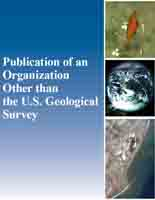Comparison of hot hydroxylamine hydrochloride and oxalic acid leaching of stream sediment and coated rock samples as anomaly enhancement techniques
Links
- More information: Publisher Index Page (via DOI)
- Download citation as: RIS | Dublin Core
Abstract
A hot hydroxylamine hydrochloride (H-Hxl) extraction in 25% acetic acid is compared with the commonly used oxalic acid extraction as a method of anomaly enhancement for Cu and Zn in samples from two very different metal deposits and climatic environments. Results obtained on minus-80-mesh stream sediments from an area near the Magruder massive sulfide deposit in Lincoln County, Georgia, where the climate is humid subtropical, indicate that H-Hxl enhances the anomaly for Cu by a factor of 2 and for Zn by a factor of 1.5, compared to the oxalic method. Analyses of Fe oxide-coated rock samples from outcrops overlying the North Silver Bell porphyry copper deposit near Tucson, Arizona, where the climate is semi-arid to arid, indicate that both techniques effectively outline the zones of hydrothermal alteration.
The H-Hxl extraction can also perform well in high-carbonate or high-clay environments, where other workers have suggested that oxalic acid is not very effective. Therefore, the H-Hxl method is recommended for general exploration use.
| Publication type | Article |
|---|---|
| Publication Subtype | Journal Article |
| Title | Comparison of hot hydroxylamine hydrochloride and oxalic acid leaching of stream sediment and coated rock samples as anomaly enhancement techniques |
| Series title | Journal of Geochemical Exploration |
| DOI | 10.1016/0375-6742(82)90018-8 |
| Volume | 17 |
| Issue | 1 |
| Year Published | 1982 |
| Language | English |
| Publisher | Elsevier |
| Description | 13 p. |
| First page | 35 |
| Last page | 47 |


